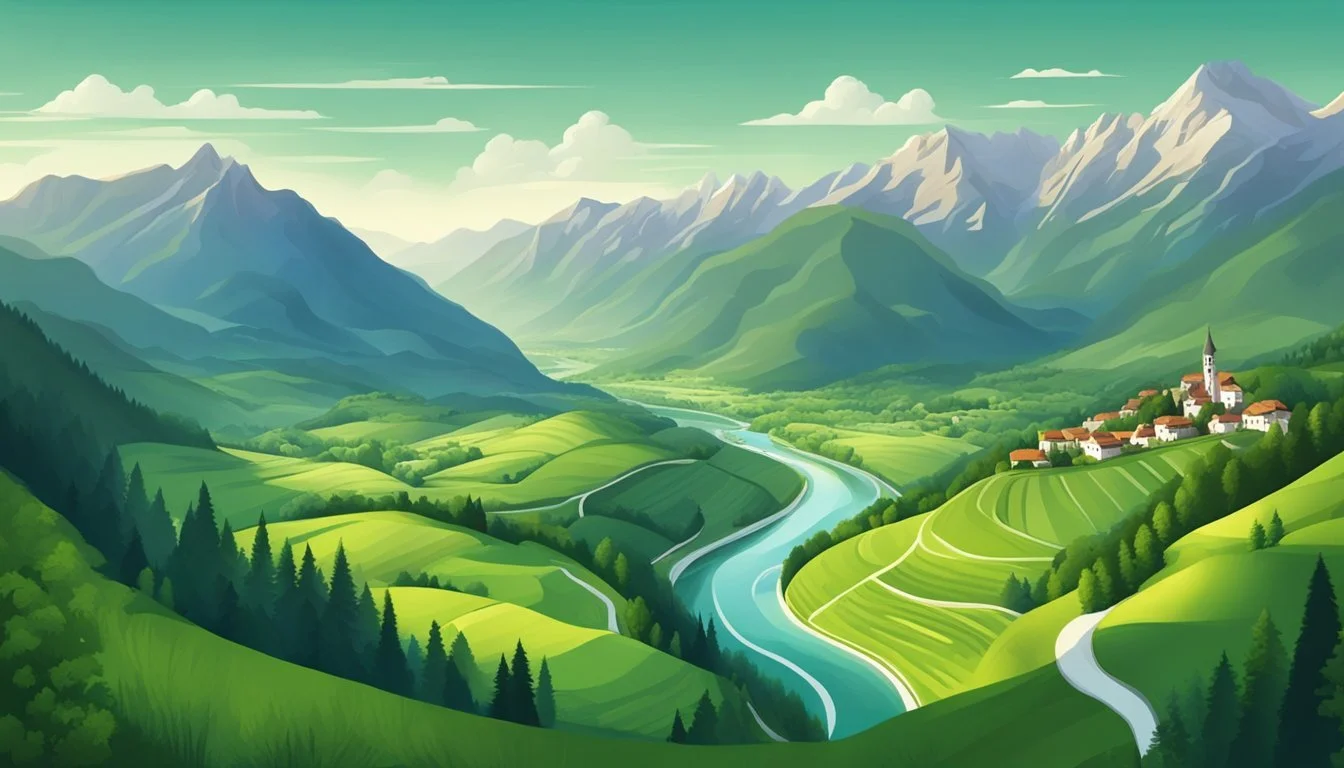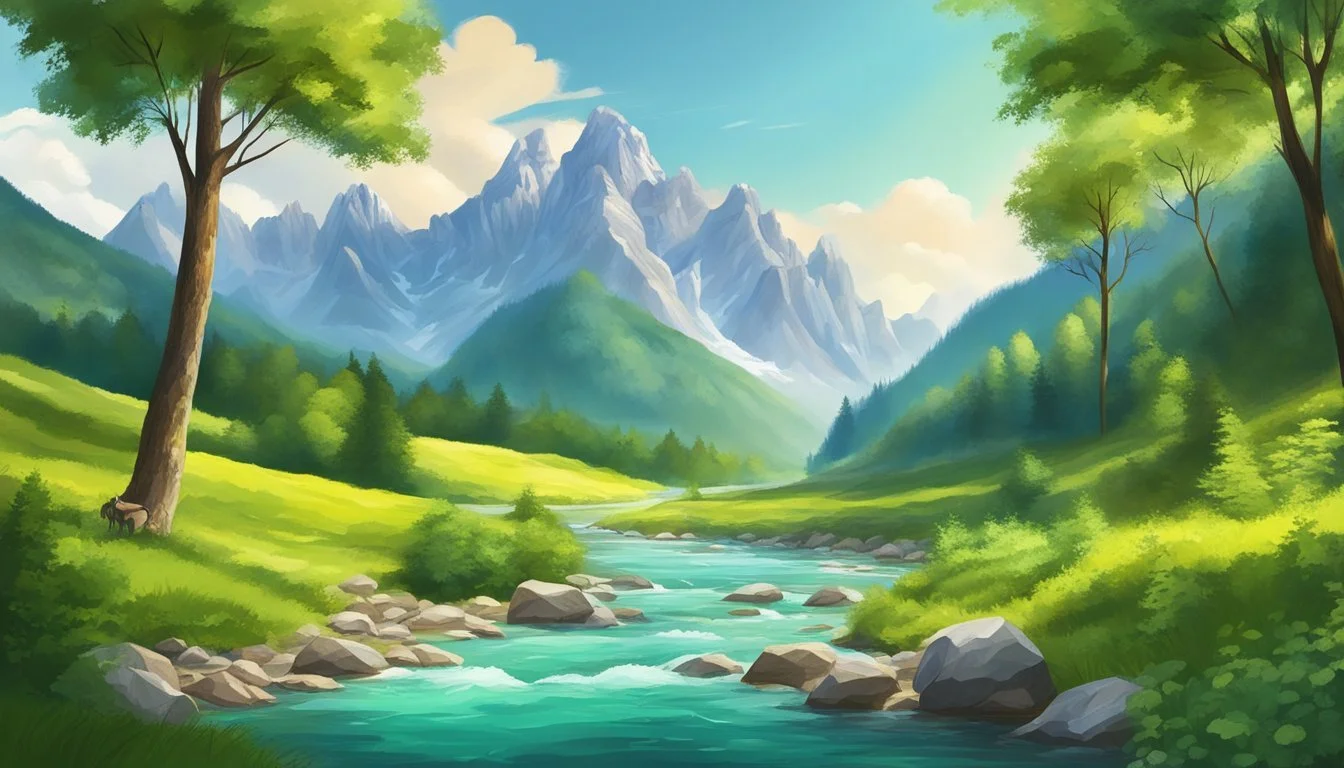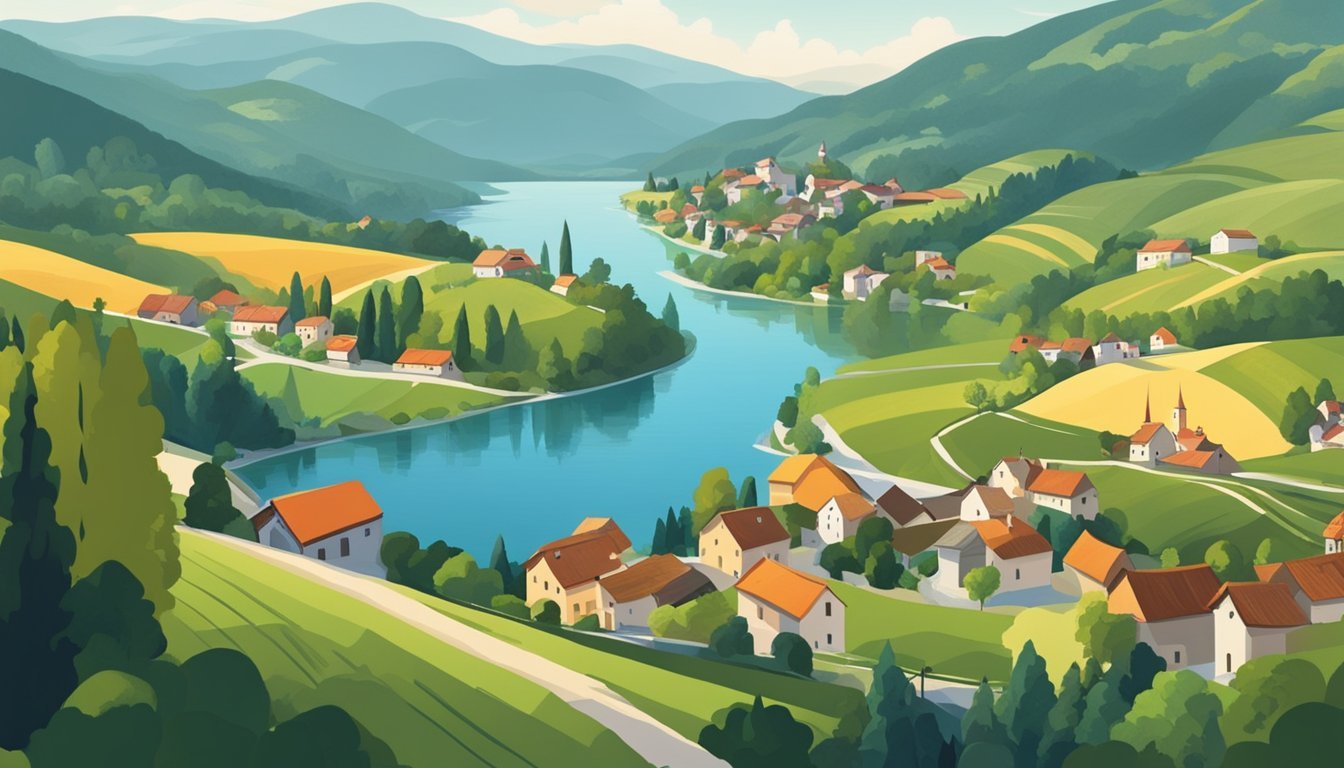9 Engaging Documentaries About Slovenia
Exploring the Hidden Gems of Central Europe
Slovenia, a small Central European country nestled between the Alps and the Adriatic Sea, boasts stunning natural beauty and rich cultural heritage. Its diverse landscapes, from pristine lakes to rugged mountains, provide a captivating backdrop for documentary filmmakers. These films offer viewers a window into Slovenia's unique culture, history, and environment.
Documentaries about Slovenia capture the essence of this often-overlooked European gem, showcasing its natural wonders, traditions, and people. From exploring the country's magnificent national parks to delving into its historical roots, these films provide insight into what makes Slovenia special. Whether focused on wildlife, culture, or adventure, these documentaries invite audiences to discover the many facets of this picturesque nation.
1) The River That Connects: A Journey Through Slovenia
The Soca River weaves through western Slovenia, creating a stunning natural tapestry. This 138-kilometer waterway is renowned for its mesmerizing emerald hue, captivating viewers with its beauty.
The documentary explores the river's path as it flows past picturesque towns like Bovec, Kobarid, and Tolmin. Each location offers a unique glimpse into Slovenian culture and history.
Viewers are treated to breathtaking aerial shots of the river cutting through the Julian Alps. The film showcases the diverse ecosystems that thrive along its banks, from lush forests to rocky gorges.
Adventure enthusiasts will appreciate the segments on kayaking and rafting in the Soca's crystal-clear waters. These activities highlight the river's role in Slovenia's outdoor tourism industry.
The documentary also delves into the Soca's historical significance, touching on its role in World War I. It examines how the river has shaped the surrounding landscape and communities over time.
As the Soca makes its way towards the Adriatic Sea, the film illustrates its importance to both Slovenia and neighboring Italy. The river serves as a symbol of connection between cultures and nations.
2) Alpine Stories: Slovenia's Julian Alps
The Julian Alps form a majestic backdrop in Slovenia, offering breathtaking vistas and natural wonders. This mountain range has captivated explorers and nature enthusiasts for centuries.
Triglav, Slovenia's highest peak at 9,396 feet, stands as the crown jewel of the Julian Alps. Its significance is reflected in its presence on the nation's flag, symbolizing the country's pride in its alpine heritage.
The region boasts crystal-clear turquoise rivers, cascading waterfalls, and lush alpine meadows. These natural features create a diverse ecosystem that supports unique flora and fauna.
Hiking trails crisscross the Julian Alps, providing access to stunning viewpoints and hidden valleys. The Slovenian Mountain Trail offers a challenging route for experienced hikers, showcasing the area's rugged beauty.
Lake Bled, nestled in the foothills of the Julian Alps, is a picturesque destination that draws visitors from around the world. Its emerald waters and island church create an iconic alpine scene.
The Julian Alps have been shaped by cultural influences over millennia. Roman settlements, established over 2,000 years ago, left their mark on the region's history and name.
3) Wine Trails: Slovenia's Tradition Uncorked
Slovenia's wine heritage dates back centuries, with vineyards spread across three main regions: Primorska, Posavje, and Podravje. Each area boasts unique terroir and grape varieties, contributing to the country's diverse wine landscape.
The Primorska region in western Slovenia is renowned for its coastal vineyards and high-quality white wines. The indigenous Rebula grape thrives here, producing distinctive local vintages.
In Podravje, the city of Maribor is home to the world's oldest grapevine, over 450 years old. This region showcases Slovenia's deep-rooted wine culture and historical significance.
Ptuj, also in Podravje, houses Slovenia's oldest winery. Its cellar contains vintage wines dating back to 1917, offering a glimpse into the country's winemaking past.
Slovenia's wine trails offer visitors immersive experiences. Vinogradi Horvat, for example, has gained recognition for its passionate owners and exceptional hospitality, providing guests with memorable tasting sessions.
The Zreče Hiking Trail presents a unique way to explore Slovenia's wine country. This 12-kilometer route winds through picturesque vineyards, offering stunning views of the wine-growing village of Škalce.
4) Ljubljana In Detail: Capital City Insights
Ljubljana, Slovenia's capital, is a hidden gem in Europe with a population of around 300,000. The city seamlessly blends historic charm with modern vibrancy, making it a unique destination for travelers.
At the heart of Ljubljana lies its picturesque old town, characterized by baroque architecture and narrow cobblestone streets. The Ljubljana Castle, perched atop a hill, offers panoramic views of the city and surrounding landscapes.
The Ljubljanica River runs through the city center, lined with charming cafes and restaurants. Visitors can take a boat ride to experience the city from a different perspective or simply stroll along the riverbanks.
Ljubljana's architectural landscape is diverse, showcasing influences from Germanic, Mediterranean, and Slavic cultures. The city's most famous architect, Jože Plečnik, left an indelible mark with his distinct designs throughout the city.
The capital is known for its green spaces and commitment to sustainability. In 2016, it was named the European Green Capital, recognizing its efforts in environmental protection and urban planning.
Ljubljana's compact size makes it easily walkable, allowing visitors to explore its main attractions on foot. The city center is largely car-free, contributing to its relaxed and pedestrian-friendly atmosphere.
5) Resilient Spirits: Stories From WWII Slovenia
World War II deeply impacted Slovenia, which faced trisection and annexation by neighboring powers. This documentary explores the experiences of Slovenian civilians and resistance fighters during this tumultuous period.
The film highlights the strength and adaptability of Slovenians as they navigated occupation and conflict. It features interviews with survivors who share their personal stories of hardship and perseverance.
One segment focuses on the largest POW escape of the war, known as "The Crow's Flight." Over 100 Allied prisoners fled through Slovenia with the help of local resistance members, showcasing the bravery of both escapees and their Slovenian guides.
The documentary also examines the long-lasting effects of the war on Slovenian society and culture. It explores how wartime experiences shaped national identity and influenced post-war development.
Through archival footage and expert commentary, the film provides insight into Slovenia's unique position during WWII. It sheds light on lesser-known aspects of the conflict in this region.
6) Protectors of Nature: Triglav National Park
Triglav National Park stands as Slovenia's sole national park, nestled in the northwestern corner of the country. This protected area encompasses a stunning portion of the Julian Alps, showcasing diverse landscapes and ecosystems.
The park is named after Mount Triglav, Slovenia's highest peak and a symbol of national pride. Visitors can explore pristine lakes, rushing rivers, and dense forests that characterize this alpine wonderland.
Lake Bohinj and Lake Bled, two of Slovenia's most iconic bodies of water, are found within or near the park boundaries. These glacial lakes offer breathtaking views and opportunities for recreation.
The Triglav rose, a delicate pink flower, grows among the rocky terrain and has become emblematic of the park's unique flora. This resilient plant symbolizes the fragile beauty of the alpine environment.
Conservation efforts in Triglav National Park focus on preserving biodiversity and maintaining the delicate balance of its ecosystems. Rangers and scientists work tirelessly to protect endangered species and monitor environmental changes.
7) Flavors of Slovenia: Culinary Traditions
Slovenian cuisine reflects a rich tapestry of cultural influences and regional diversity. The country's culinary heritage draws from ancient roots, blending prehistoric, Roman, and modern elements.
Slovenian gastronomy is divided into 24 distinct regions, each showcasing unique specialties. The cuisine emphasizes local, seasonal ingredients and traditional preparation methods.
Coastal areas feature Mediterranean-inspired dishes, incorporating olive oil, seafood, and wines. Inland regions showcase hearty fare like sausages, stews, and dumplings.
Carniolan sausage, a protected Slovenian delicacy, combines pork, beef, and bacon with select spices. It exemplifies the country's commitment to preserving culinary traditions.
Slovenian chefs embrace innovation while respecting heritage. They incorporate indigenous ingredients like locally harvested honey, pumpkin seed oil, and foraged wild plants into modern interpretations of classic dishes.
The country's culinary landscape also highlights artisanal products. Hand-harvested sea salt from Sečovlje Salt Pans and wines produced since antiquity showcase Slovenia's dedication to quality and tradition.
8) Architectural Wonders: Plecnik's Vision
Jože Plečnik, a Slovenian architect, transformed Ljubljana's urban landscape with his distinctive style. His work blended classical elements with modern design, creating a unique architectural identity for the city.
Plečnik's most iconic creation is the Triple Bridge, a set of three pedestrian bridges spanning the Ljubljanica River. This innovative structure connects the medieval old town with the modern city center, seamlessly integrating form and function.
The Slovenian National and University Library stands as another testament to Plečnik's genius. Its facade draws inspiration from Italian Renaissance architecture, while the interior features imposing marble columns reminiscent of ancient temples.
Plečnik's vision extended beyond individual buildings to encompass the entire cityscape. He redesigned the embankments along the Ljubljanica River, creating a harmonious blend of nature and urban space.
His work in Ljubljana earned the city the nickname "Plečnik's Ljubljana." The architect's influence can be seen in numerous other structures throughout the capital, including churches, markets, and public spaces.
9) Karst Mysteries: Caves and Landscapes
Slovenia's Karst region is a fascinating landscape of underground wonders and unique geological formations. This documentary explores the intricate network of caves, sinkholes, and underground rivers that characterize the area.
Viewers are taken on a journey through the Postojna Cave, Europe's most visited cave system. The film showcases its stunning array of stalactites, stalagmites, and other mesmerizing rock formations.
The Škocjan Caves, a UNESCO World Heritage site, are also featured. The documentary highlights the caves' enormous underground gorge and the Reka River that flows through it.
The film delves into the formation of karst landscapes, explaining how water slowly dissolves limestone over millions of years to create these subterranean marvels. It also examines the unique flora and fauna that have adapted to life in these cave environments.
Above ground, the documentary explores the distinctive surface features of the Karst region. These include sinkholes, disappearing lakes, and the region's famous rock formations.
The film concludes by discussing ongoing cave exploration efforts in Slovenia. It reveals that new caves are discovered each year, with over 8,000 documented to date.
Cultural Influence and Themes
Slovenian documentaries reflect the country's rich cultural heritage and unique geographical position. These films explore historical narratives and showcase how the diverse landscape shapes storytelling approaches.
Historic Perspectives
Slovenian documentaries often delve into the nation's complex past. Films like Ashley Colburn's Emmy Award-winning project highlight Slovenia's historical and cultural significance. This documentary, supported by the Slovenian Tourist Board, captures important cultural sites and traditions.
The Slovenian Ethnographic Museum and National Museum of Slovenia play crucial roles in preserving cultural artifacts. These institutions frequently collaborate with filmmakers to create documentaries that bring history to life.
Many films explore Slovenia's 20th-century experiences, including the impact of social realism on artistic expression. Documentaries examine how political changes influenced cultural development and national identity.
Impact of Geography on Storytelling
Slovenia's diverse landscapes profoundly influence documentary filmmaking. The country's varied terrain, from Alpine peaks to Mediterranean coastlines, provides stunning backdrops for visual storytelling.
Filmmakers often incorporate Slovenia's natural beauty into their narratives. The "Green Slovenia" documentary, featuring actor Aliash Tepina, showcases the country's commitment to sustainable tourism along cycling routes.
Documentaries frequently explore the connection between Slovenian culture and its environment. Films highlight how traditional practices and local customs are shaped by regional geography.
The Karst region, known for its unique geological features, serves as a popular subject for documentaries exploring the interplay between nature and culture.
Filmmaking and Production Details
Slovenian documentaries benefit from local talent and innovative technology. The country's film industry leverages its natural beauty and skilled professionals to create compelling nature and cultural documentaries.
Collaboration with Local Talent
Slovenian filmmakers often partner with local experts and production companies. The documentary "Wild Slovenia" was produced by Fotokom, a Slovenian production company, in collaboration with RTV Slovenija, the national broadcaster. This partnership brought together experienced filmmakers and nature specialists.
Local narrators and voice actors contribute authentic Slovenian perspectives. Jure Longyka and Michael Manske lent their voices to "Divja Slovenija," enhancing the documentary's local flavor.
Slovenian production teams frequently work with international crews. This cross-cultural collaboration brings diverse skills and perspectives to documentary projects.
Use of Technology in Slovenian Documentaries
High-definition cameras capture Slovenia's diverse landscapes and wildlife. Filmmakers employ drones for sweeping aerial shots of Alpine peaks and Dinaric forests.
Underwater filming equipment allows documentarians to showcase Slovenia's rich aquatic ecosystems. This technology reveals rarely seen fish species and amphibian habitats.
Time-lapse photography highlights seasonal changes in Slovenia's natural environments. Advanced editing software enables smooth transitions between scenes, creating visually stunning documentaries.
Sound recording technology captures ambient forest sounds and animal vocalizations. This immersive audio enhances viewers' connection to Slovenia's wild spaces.






